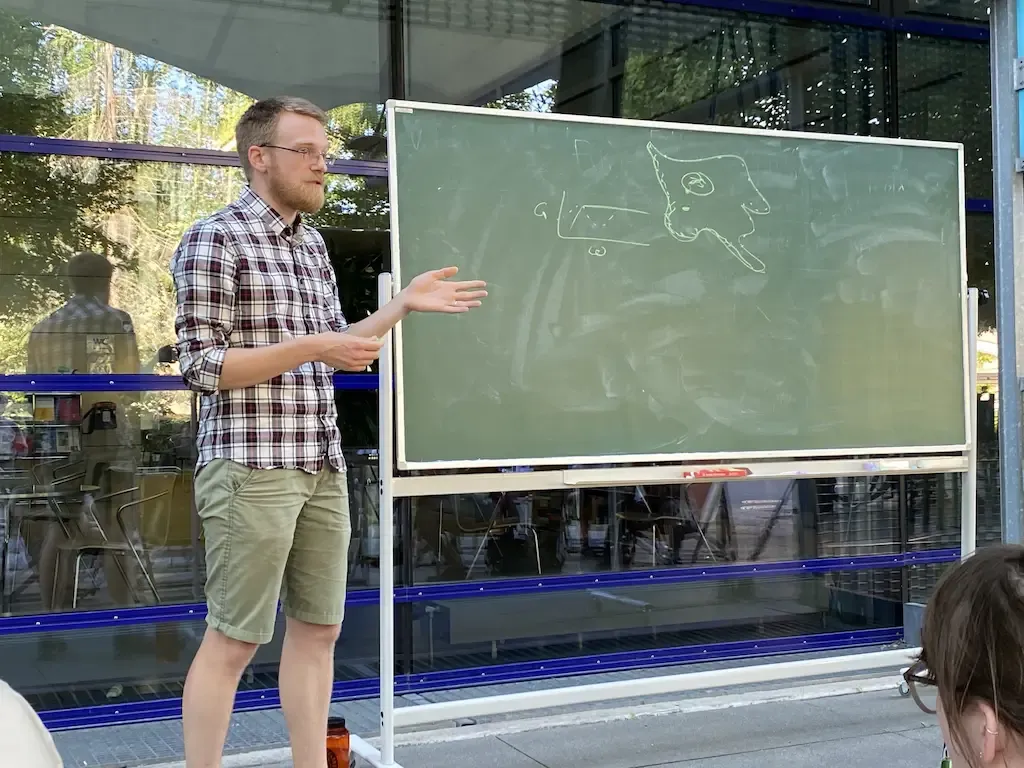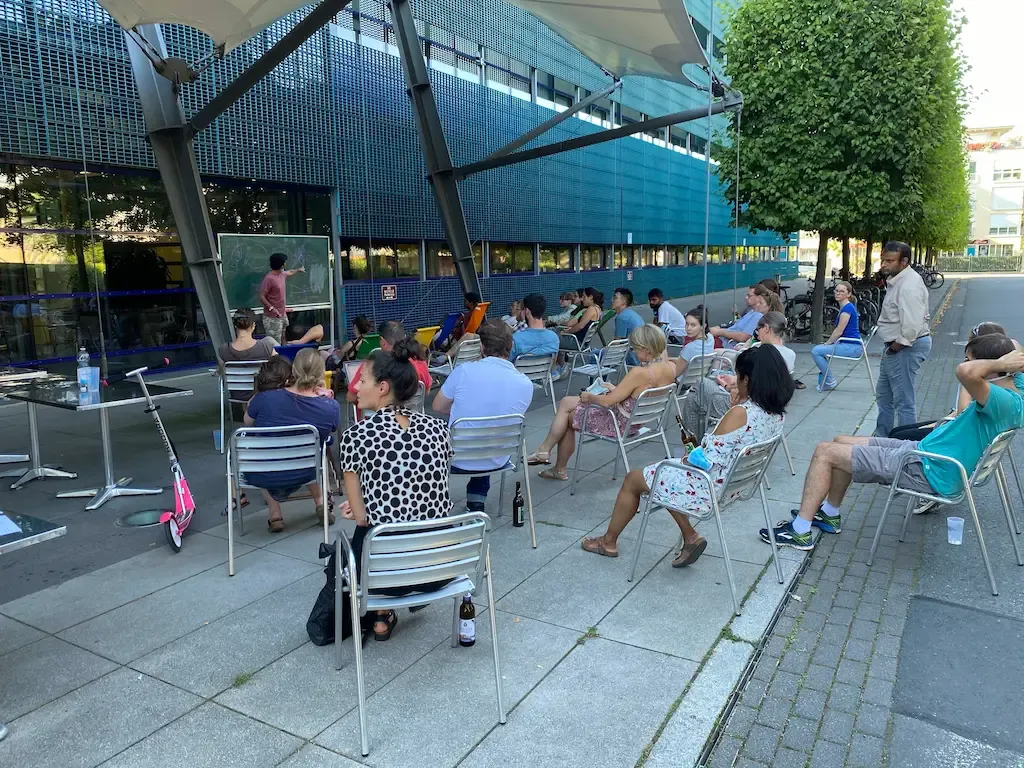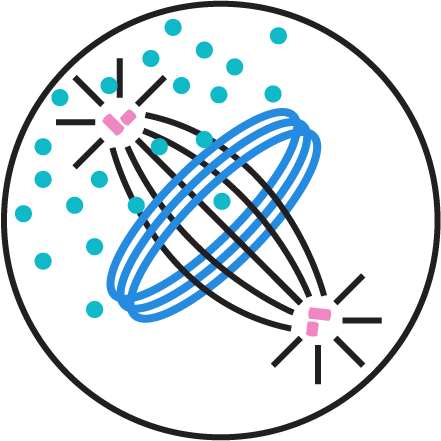Even though it’s 35°C outside and the wasp season is in full swing, a sizeable group of scientists gathered outside the entrance of the MPI-CBG to listen to Patrick McCall and Samir Vaid walk them through their research interests and outcomes in the second week of our summer chalk talk series.
Patrick McCall, an ELBE postdoc working at the Hyman and Brugués labs, started with a talk on “reverse-engineering biomolecular phases with quantitative phase microscopy”. His goal is to probe the connection between how cells design proteins from a pool of amino acids in native and modified states so that they have the desired properties that drive compartmentalisation.

Patrick McCall describes the frequency-dependent material response of the actin cortex as an example of a desirable property the cell developed through the design of the cytoskeleton
Experimentally, Patrick deploys quantitative phase microscopy using a holographic microscope at MPI-CBG to measure the refractive index of condensates formed by proteins in vitro. In aqueous solutions, the refractive index is linearly proportional to the concentration of the protein, allowing for the plotting of the binodal curve in the phase diagram. Patrick aims to manipulate the sequence of proteins known to phase separate at physiological conditions and plot their phase diagrams to deduce the effect of sequence variations on the behaviour and consequently the compartmentalisation of given proteins. By generating enough data from experiments, he then aims to infer parameters that can be used when simulating how the phase diagram of other, untested proteins would respond to changes in the sequence of said proteins, thereby predicting how mutations in genes and changes in protein sequence would affect the compartmentalisation and consequently activity of a given protein in cells.

Samir Vaid explains the role of CSF composition in determining the length of the neurogenic period in the developing mouse embryo
Samir Vaid from the Huttner lab then explained his work on examining the role of cerebrospinal fluid (CSF) composition in determining the length of the neurogenic period in the developing mouse embryo. Samir performed proteomic and computational analysis to determine the composition of the CSF at different stages of development of the mouse embryo to find the components that could determine how long the neurogenic period lasts. He aims to unveil whether manipulating the levels of these components would prolong the neurogenic period, thereby increasing the size of the upper layers of the neocortex of the mouse.
